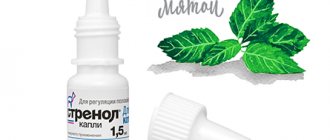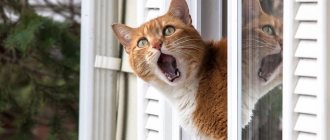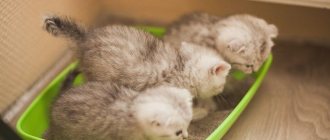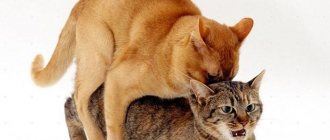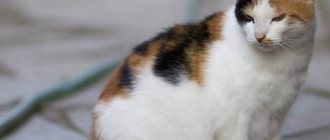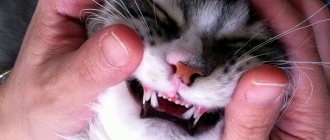At what age do cats begin to mark their territory, what to do and how to fix it. The situation becomes tense for all residents after being tagged due to the unpleasant odor. You should not immediately start scolding the cat and use physical force. First, let's figure out the reasons for this behavior of your animal, and then try to solve the problem.
Age characteristics of cats
When people get a kitten, they rarely appreciate the full depth of the problem. Having matured, he will probably begin to mark the home where he lives. Small kittens do not cause as many problems for their owner as adult cats. They often go to the litter box and leave a trail of unpleasant odor throughout the apartment. Over time, cat instincts come to him, which are inherent in nature.
One of these instincts is a sense of ownership. This instinct is absolutely normal, because all cats are predators in the wild. When cats live in the wild, they can catch mice, and at home, wild instincts manifest themselves in stripping furniture in anticipation of a good hunt.
The moment when it begins to mark housing is a sign that the animal has reached maturity. And as you grow older, the number of pheromones increases, and such a pungent smell appears. Cat breeds begin marking territory at different ages, but on average this process occurs at 6-7 months.
Care after castration
Since general anesthesia has a serious effect on the Maine Coon’s body, the cat should be under regular supervision in the first 24 hours after castration or sterilization. If you notice symptoms such as lack of appetite and bowel movements, severe lethargy and drowsiness, you should contact your veterinarian for advice so as not to miss an exacerbation of chronic diseases or the addition of an infection.
In most cases, the suture after castration does not require special care. To prevent licking and restrain natural activity, a special blanket is put on the animal. It is not allowed to be removed until the wound has completely healed, which occurs two weeks after the operation.
To avoid the development of obesity, it is better to neuter your Maine Coon at an early age. But even in a young individual, after sterilization or castration, motor activity decreases, and the need for high-calorie nutrition increases.
Sooner or later this leads to fatty degeneration, cardiovascular failure and other serious diseases. To prevent such developments, food for a castrated cat should be low-calorie. The Maine Coon should be fed well, but strictly in accordance with the daily allowance indicated on the package.
The Maine Coon is a native breed of American cat, characterized by its large size and impressive body weight. Representatives of the breed are reliable friends and companions, capable of quickly winning the love of the whole family.
Why does a cat mark houses?
No matter what age he does this, the process consists of the pet releasing a small amount of urine in order to recognize its territory. Usually the cat uses vertical objects: doors, walls, corners, furniture, etc. On the street, cats can use fences, trees, etc. for this purpose.
Some cat owners believe that the cat does this on purpose if he harbors a grudge against the owner. This is an incorrect judgment, since this process in cats is associated with animal instincts. Cats have an excellent sense of smell, thanks to the identification of any place with the help of scent, they tie themselves to one or another territory. In this way, cats protect their home from strangers and make it clear to other animals that the territory is already occupied.
History of the Maine Coon breed
The world learned about the existence of Maine Coons from American breeders. The name of the breed translates as “Manx raccoon.” And if everything is clear with the first term in this phrase (“Maine” - from the name of the American state of Maine), then the second requires clarification. The unusual striped color and fluffy tails of Maine Coons gave rise to a legend among breeders that the breed was obtained by crossing a representative of the cat family with a raccoon. The story remained a story, but the word “coon” (short for the English racoon - raccoon) still stuck to the breed.
The most beautiful version of the appearance of gigantic catfish in North America can be considered the legend of the failed escape of Queen Marie Antoinette. Expecting reprisals from the French revolutionaries, the wife of Louis XIV prepared to flee to the American continent and, to be on the safe side, sent a ship ahead of her with things dear to her heart, including her beloved long-haired cats. The mustache-tailed cargo sailed to the shores of New England safe and sound and, freely interbreeding with local shorthair cats, gave rise to a new breed that soon spread throughout the entire state.
Modern experts tend to believe that the history of the origin of the Maine Coon “race” is much more prosaic. Cats were brought to America quite a long time ago, but they were predominantly short-haired individuals. Longhaired cats arrived on the continent much later, along with the first settlers from the Old World. As a result, finding themselves in conditions favorable for free crossing, the indigenous inhabitants and the “visiting” representatives of the tailed-mustachioed brethren became the ancestors of a new variety of large long-haired cats.
A real pioneer in the development of the Maine Coon breed was a cat named Captain-Jenks-of-the-Sea-Cavalry. This fluffy giant caused indescribable delight among spectators in 1861, showing off at cat shows in Boston and New York and eclipsing the then popular Angoras. But by the 20th century, the Manx giants had given up their positions and were ousted by the Persians and Siamese for almost half a century. After the end of World War II, the Coons reasserted themselves, although at that time only within the American continent. In 1953, the breed acquired its own official club, and in 1968 the first fan association and Maine Coon Breeders and Fanciers Association/MCBFA was founded. As for Europe, the Coons reached it only in the 70s of the last century.
Do cats always and often mark in the apartment?
Not all cats follow the steps inherited from the wild, marking things and the space around them. There are exceptions when domestic cats do not bother their owners and do not at all want to mark everything around them, leaving behind pungent odors.
But this phenomenon is observed quite rarely, and for the most part they still mark objects, furniture and walls around them as soon as they begin to grow up. These processes are determined by the historical physiology of males. The cat gives a signal to others that this space belongs to him and he will not tolerate strangers inside his territory.
Why does a cat mark objects, clothes, shoes?
These markings of things happen mainly with one main purpose - to convey to others that he is the boss here. And all these things belong to him. It doesn’t matter to the cat what kind of object he marks: a tree or some kind of road from human use. Your pet has no idea how much your leather coat or bag is worth, so he will be happy to also mark everything expensive in the house.
If we talk specifically about shoes, then the cat marks shoes first of all, since this item stores a lot of foreign odors. This could be the smell of the street or the smell of the owner's feet. It is in order to eliminate the foreign aroma that the cat actively marks the residents’ sneakers and shoes.
Why do cats ignore the litter box during heat?
As noted earlier, a cat during estrus often shits anywhere. Ignoring the tray during sexual heat is due to the fact that she is trying to attract a partner for mating with the help of her smell.
During the period of heat, pets that roam freely on the street often disappear from home for some time. If a cat is unable to find a sexual partner outside the home, it leaves scent marks everywhere. This is a kind of signal that the cat is ready for mating and subsequent procreation. This behavior is typical not only for pets who have not undergone castration and sterilization, but also for sterilized females whose ovaries are preserved, hormones are produced and, accordingly, sexual attraction to males arises.
Third-party reasons for the appearance of marks
There may be other reasons that force a cat to mark its territory. Here is a small list of factors:
- something might have scared your pet;
- the cat is in a state of stress;
- the cat is experiencing physical discomfort;
- the cat has changed its place of residence;
- the pet discovered another animal in the house;
- your cat is overtaken by jealousy towards one of the family members.
To relieve these stressful conditions and restore your cat’s former calm, talk to him quietly. Hold him in your arms, stroke him, give him extra attention.
Several cats in the house
The situation becomes more complicated if you have several cats at once. A spirit of constant rivalry will rage among them. They may take turns marking at an accelerated rate, constantly trying to out-mark another animal. This can continue for a very long time until the animals establish the main owner among themselves.
It happens that one of the favorites will show himself brighter and bolder than others, and the rest will just have to come to terms with his primacy. Therefore, other cats will obediently accept the main position of one of them. The method used is to poke the younger one’s nose into his mark. If the cat answered you with a quiet meow, then he has probably come to terms with his situation. And he will give the right to mark to an older comrade. But this may also depend on the breed of the cat.
Duration and frequency of sexual heat
In the very first days of estrus (1-4 days), the cat demonstrates sexual arousal, but does not allow mating.
This time is called proestrus, “forerunner”. Unlike dogs, cats do not have a clear boundary between estrus and proestrus, and it is difficult to determine these periods. If sexual intercourse does not occur during estrus, then ovulation does not occur. In this case, sexual heat returns every 10-14 days. The period between estrus is called interestrus, this is a time of rest for the uterus and ovaries. In some cats, the concentration of estrogen in the blood does not decrease, and the animal walks constantly.
Complete rest of the ovaries, which means the absence of the reproductive instinct, is called anestrus, the absence of estrus. In stray cats, this period occurs in late autumn or winter, due to short daylight hours and the action of the hormone melatonin. Anestrus does not occur in domestic cats due to constant light and nutritious food.
A distinctive feature of the breeding system in cats is induced ovulation. Simply put, an egg is released from the ovary only in response to vaginal stimulation. Natural ovulation occurs due to mating, but artificial ovulation is also possible - as a result of manipulations in the vagina.
Ovulation occurs 1-2 days after intercourse, and after another 1-2 days the estrus stops. The ovary forms the corpus luteum, which produces the hormone progesterone to maintain pregnancy.
If the egg is released and fertilization does not occur, progesterone will be produced “by inertia” for 1-1.5 months (less than a true pregnancy). Progesterone prevents the resumption of estrus.
We suggest you read: Large breeds of pigs - choice for breeding
In cats, sexual function does not decline until death; even at 16-19 years of age, estrus is observed from time to time in non-sterilized animals.
I'm 14 years old, motherfucker, how old can you be?
Main reasons
In addition to the animal instinct to secure territory, there are other reasons for marking that are worth paying attention to.
Stress
Sometimes the smallest changes can cause stress in a cat, be it moving to another place of residence or new furniture. Marking the territory will again give him confidence that he is at home. Try to calm your pet at such moments with quiet conversation, stroking or playing. Marks may be a sign that the animal is not feeling well or is getting sick, you need to pay attention to this.
Frightened animal
They often mark the territory intensively due to the animal's fear. One of the residents of the apartment could have accidentally scared him. Also, the cause of fear could be the appearance of another animal in the house or some unusual situation. An experienced owner always senses this behavior of his pet and tries to calm him down using various methods.
Jealousy
This condition is an important reason for your pet to mark throughout the house. Oh, these cats are sensitive creatures and always feel a lack of attention to their person. The cat may be offended that the owner’s attention does not belong to him alone, for example, the appearance of a child in the house. Therefore, trying to attract attention to themselves, they begin to mark objects. Hold him in your arms, give him something tasty and pamper him. Perhaps he will stop continuing after this.
Mating
The marks mean that he is looking for a cat. In this case, you need to create a strong smell in those places that the cat fell in love with first. Apply ammonia, bleach, lemon, iodine or a solution of potassium permanganate to the areas it marks. Strong smells should scare the cat away.
You can make cotton swabs, dip them in the appropriate compounds and place them in certain places. Sometimes, in cases where the mating instinct is too strong, veterinarians prescribe special hormonal medications.
Preventive measure
It’s difficult to fight nature, but cat owners have developed a few tricks.
- Animals usually choose certain points to which they return with enviable regularity. These places are rubbed with lemon, the approaches to them are treated with red and black pepper powder.
- The animal care industry has developed a number of special products in the form of sprays, drops, and powders. They are designed to discourage marking, but their effectiveness often depends on the cat’s preferences. What worked for your neighbors may not work for another pet.
- Replacing the tray may also solve the problem. Sometimes the animal is simply uncomfortable with the size or does not like the structure and smell of the filler. This is indicated by the pose of the animal, when its front paws are on the floor, it tries to bury the results of its activity, scraping the rug with its paws.
You should know: the most decisive measure against the appearance of marks in an apartment is castration.
It is carried out without waiting for the animal to grow up, if there are no plans to search for cats for breeding or to organize free walking for the pet. In an adult state, it is pointless to carry out it; the animal will continue to leave marks out of inertia.
The operation is simple, healing occurs very quickly. The benefits include stopping damage to furniture and wallpaper, reducing the animal’s aggressiveness, maintaining a playful disposition, prolonging the pet’s life, and eliminating genitourinary infections. The most important thing is that there are no marks or heavy smell in the room.
How to find cat marks
Finding a cat's marks is quite simple; you just need to carefully examine his favorite places: walls, interior items, clothes or shoes. Most often, marks can be easily identified by smell, because it is quite persistent in cats. Some cats manage to make marks in unexpected or hard-to-reach places. In this case, they can be recognized using a portable ultraviolet lamp.
This lamp will help you find a cat's mark in the absence of a light source. By shining a lamp in the corners, you will find a yellow or light green spot.
How to get rid of cat marks
Here are some simple tips to help you resolve your cat marking problem:
- Try placing your cat's litter box in a place where he constantly marks. Perhaps the cat will leave his marks inside the tray.
- After you have identified the place where the cat is marking, immediately pour undiluted hydrogen peroxide onto it.
- Watch the cat carefully; usually he returns to his old place and wants to mark there again.
- 10-15 minutes after treating with peroxide, rinse the surface, for example, with Lenor.
Weaning off marking of a young pet
If you have adopted a young cat into your home, you need to be patient. Think in advance about how to train it and how to deal with it if marks do appear. Until they mature at the age of 6-7 months, kittens do not mark their apartments. Therefore, watch carefully when such signs begin to appear. It is problematic to completely get rid of the marks, but you can teach the purr to behave properly.
Pay a lot of attention to the maturing cat - young ones always feel a lack of attention and may begin to mark precisely for this reason. If you leave the apartment for a long time and leave the animal alone, do not forget to leave him toys and enough food. Treat it kindly, the use of various forceful methods does not make the situation easier and the cat will take on its own even more strongly.
Appearance of Maine Coons
The appearance of the glorious Maine Coon family was significantly influenced by the climate of Maine: it is very difficult to survive in the cold and snowy continental winter without a thick undercoat. A wide paw, protected by additional tufts of fur, is also a useful device that helps to slide along the ice crust without falling into the snow. Well, its impressive size is an invaluable advantage when hunting small animals. As for modern representatives of the breed, their appearance could not help but be affected by the passion of European breeders for extremism. Today's Maine Coons have significantly increased in size, their faces have become even more elongated, and their ears have grown significantly.
Head
Massive, noticeably elongated, with a relief profile, high cheekbones and a medium-length nose. Since the ancestors of modern Maine Coons hunted rodents, they often had to “dive” into holes for prey, which became the main prerequisite for the formation of a somewhat elongated skull shape.
Eyes
The eyes are round in shape, set wide and slightly oblique. The shade of the iris varies from green to rich yellow and is in harmony with the color of the animal.
Large in size, with a wide base and a slight forward tilt. A distinctive feature is the “lynx tassels” and “brushes” peeking out from the ear flap. It was the outstanding size of the ear that helped Maine Coons become excellent mousecatchers, for which the breed is especially loved by American farmers. The skin on the ears is thick, protected by thick hair, and the cartilage structure is dense. To maximize heat retention and protect the hearing organs, coons use an ancient technique: the animal presses its ears tightly to its head, as if folding them, which prevents icy air from penetrating inside the funnel.
The Maine Coon's neck is strong, muscular, of medium length, adorned with lush and long hair. Among breeders, individuals with a neck “collar” reaching to the ear flaps are especially valued.
Elongated, close to a rectangle in shape, with well-developed muscle mass. The chest is quite wide, the shape of the back is horizontal.
Limbs
Tall, muscular and very strong. Set wide apart.
Massive, round in shape, protected by a dense “edge”.
Tail
The Maine Coon's tail is long (equal in size to the length of the body), with a wide base, without kinks. Covered with thick hair, under which a dense, water-repellent undercoat is hidden. In extreme weather conditions, the tail acts as a natural heater: the animal wraps it around the body, thereby protecting itself from the cold.
Wool
The Maine Coon's coat is long (from 10 to 15 cm), but uneven, gradually increasing in volume from the shoulders to the belly. The most luxuriant wool is in the area of the so-called “pants”. In the dorsal area, the cover is more rigid with a predominance of guard hairs. The belly and sides are protected by a soft downy undercoat, the main purpose of which is warming and water-repellent.
Color
Individuals bred in nurseries in different countries can differ quite greatly in both color and size. Recently, cats of any color are allowed to participate in exhibitions, with the exceptions of point, lilac and chocolate. At the same time, the classic “identifying shades” of coons are considered to be agouti, brindle black, marbled black and white (the latter option is widespread in Russia).
Possible defects
If a Maine Coon's appearance does not conform to generally accepted standards, it automatically excludes it from the ranks of the show class. In other words, such individuals are barred from entering exhibitions. Reasons for “excluding” a cat from participating in all kinds of competitions may be insufficiently fluffy fur in the belly area, too short a tail, small size of the animal, spots and specks on the fur, a relief shape of the nose (the presence of a noticeable depression in the middle), wide-set ears, uniform length of fur throughout the body. A genetic anomaly such as polydactyly (the presence of an excess number of toes on a cat’s paws) is also considered a significant reason for banning an animal from participating in public events. At one time, this mutation was widespread among Maine Coons, which is why it received the status of the main defect of the breed.
Raising an adult cat
There will be more problems with an adult cat, since they are trying to mark the territory very actively. This is especially evident during the period of sex hormones - in summer and spring. At this time of year, the amount of hormones in the animal rises, which promotes the activation of marking of territory and objects.
It is recommended to keep your pet in a slightly darkened room with curtains, as bright light stimulates the production of sex hormones. To reduce the appearance of new marks, immediately disinfect those already made with hydrogen peroxide or other means. Do not use solutions containing chlorine to avoid harm to the animal. After treating the area, you can use oils with an aromatic effect: orange, lavender, rosemary.
What to do?
The best option is castration. It is advisable to have the surgery before puberty occurs. Many owners are afraid of how such a procedure will later affect the animal’s well-being. In fact, this is a common operation, for which it is enough to choose a good specialist.
© shutterstock
Special means
To stop your cat from marking, you can use special means in consultation with your veterinarian. These could be pills to calm hormonal levels: Fitex, Kot-bayun, Stop-stress. But you need to keep in mind that these drugs do not affect all pets. Some drops may be harmful to your cat, so consult your veterinarian.
Lemon juice poured onto a “crime scene” can discourage an animal from marking that area. Black pepper or mustard powder can also scare away the animal. There are special sprayers with a special smell - they are sold in stores that sell pet supplies.
